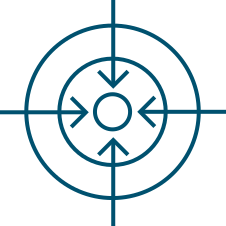Engineering Paper

Learn about the history and science of flight then put inspiration into action.

LEARNING OBJECTIVE:
To learn about and recognise the historical significance of the Smith brother’s flight.
To learn about and apply the engineering process to the scientific principles of flight.

SUCCESS CRITERIA:
Apply knowledge of the forces of flight and the engineering process to the task.

GETTING STARTED
Have your students ever heard of Australia’s Great Air Race? Do they know the names Ross and Keith Smith? If so, what do they know about them? What is their understanding of the beginnings of air travel?
Get to know the story with one or both of these short videos:
The Greatest Air Race – Trailer
Epic Flight Centenary
Optional: Undertake the Details and Diagrams activity to bolster students’ understanding of the Vickers Vimy aircraft.

Engineering Paper
The Epic Flight was, in part, an amazing engineering success. Begin by getting familiar with the four forces of flight: How Do Planes Fly?
Next, discuss the engineering process using a resource such as Teach Engineering – Engineering Design Process.
Sort students into small groups of 2-3 and distribute instructional worksheet. Students will work in their group to make, test and document the success of a basic paper plane. They will then re-design the plane, test it, and document their findings.
Optional: Recreate Australia’s Great Race by challenging groups to test their re-designed planes on a flight course from one side of an oval to another. Determine a maximum number of throws and/or a time limit in which to achieve the end goal. Which planes and crews make the grade?

NEXT STEPS
There is so much more to learn about Australia’s Great Air Race, explore more lessons and activities on the Vickers Vimy Learn page.

CURRICULUM LINKS
Year 4
Science – Identify how forces can be exerted by one object on another and investigate the effect of frictional, gravitational and magnetic forces on the motion of objects (AC9S4U03).
Use provided scaffolds to plan and conduct investigations to answer questions or test predictions, including identifying the elements of fair tests, and considering the safe use of materials and equipment (AC9S4I02).
Design and Technologies – Generate, iterate and communicate design ideas, decisions and processes using technical terms and graphical representation techniques, including using digital tools (AC9TDE6P02).
Year 5
Science – Construct and use appropriate representations, including tables, graphs and visual or physical models, to organise and process data and information and describe patterns, trends and relationships (AC9S5I04).
Design and Technologies – Generate, test, iterate and communicate design ideas, processes and solutions using technical terms and graphical representation techniques, including using digital tools (AC9TDE8P02).
Year 6
Science – Construct and use appropriate representations, including tables, graphs and visual or physical models, to organise and process data and information and describe patterns, trends and relationships (AC9S6I04).
Design and Technologies – Generate, test, iterate and communicate design ideas, processes and solutions using technical terms and graphical representation techniques, including using digital tools (AC9TDE8P02).
Year 7
Science – Investigate and represent balanced and unbalanced forces, including gravitational force, acting on objects, and relate changes in an object’s motion to its mass and the magnitude and direction of forces acting on it (AC9S7U04).
Select and construct appropriate representations, including tables, graphs, models and mathematical relationships, to organise and process data and information (AC9S7I04).
Design and Technologies – Generate, test, iterate and communicate design ideas, processes and solutions using technical terms and graphical representation techniques, including using digital tools (AC9TDE8P02).
Year 8
Science – Select and construct appropriate representations, including tables, graphs, models and mathematical relationships, to organise and process data and information (AC9S8I04).
Design and Technologies – Generate, test, iterate and communicate design ideas, processes and solutions using technical terms and graphical representation techniques, including using digital tools (AC9TDE8P02).

